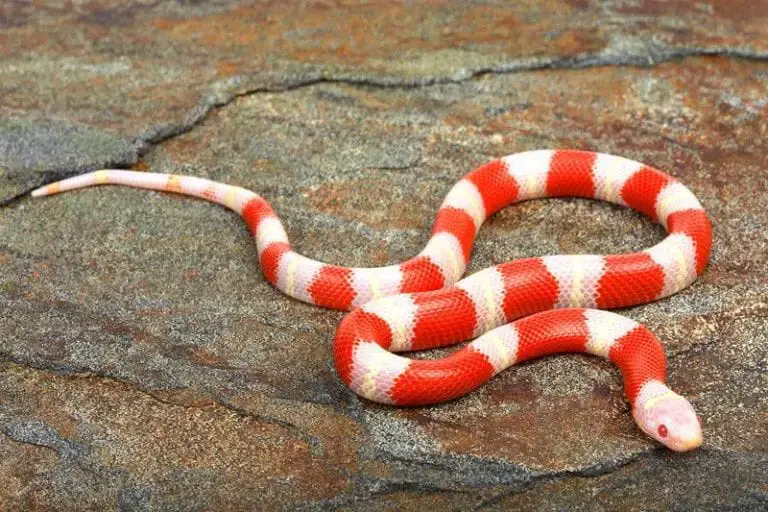
Description:
Scientific name: Lampropeltis triangulum nelsoni
Life span: 12-20 years
A subspecies of the king snake is called the Nelson’s milksnake (Lampropeltis triangulum nelsoni). The snake often has a light snout with dark flecks and has 13 to 18 red rings (in rare cases, the snout is mostly black). The black and white bands are substantially thinner while the red bands are noticeably wider. On the white and red scales, the black tipping is essentially nonexistent. The existence of albinism and pattern aberrancies is proven. It contains a single anal plate and 19–23 rows of smooth scales.

Native Region/Habitat
From southern Guanajuato and middle Jalisco to the Pacific Coast, it can be found in Mexico. Moreover, it can be found on the Tres Marias Islands and the constricting plains of northwest Michoacán. This snake lives in interior tropical deciduous woods and semi-arid coastal thorn scrub.
Behavior:
The snake is typically nocturnal and lonesome. Yet because it is cooler and the ground is weter during the day, they tend to happen more frequently. The Nelson milk snakes can eat venomous animals, including other snakes. Compared to many other common pet snakes, Nelson’s Milk Snakes are typically a little more shy. They are also quite energetic.
Care As a pet/In captivity:
Escape-proof cages should have a hiding spot and water. If ventilation holes are made in the sidewalls of inexpensive enclosures like plastic shoe or sweater boxes, they function well. If you want to display the snake, aquariums or homemade cages also work nicely. To keep the animals clean, warm, and dry, a variety of substrates (such as aspen shavings, rodent bedding made from corn cobs, or newspaper) may be utilized. Any kind of food will enough for king snakes to eat. They will eat both warm-blooded and cold-blooded species, such as lizards and frogs, as well as warm-blooded prey like rodents and birds (in addition to other snakes). If kept between 80 and 85 degrees Fahrenheit with a five to ten degree dip at night, many species adapt well to life in captivity. The ability to regulate temperature is crucial for digestion and the response to eating.
Table





